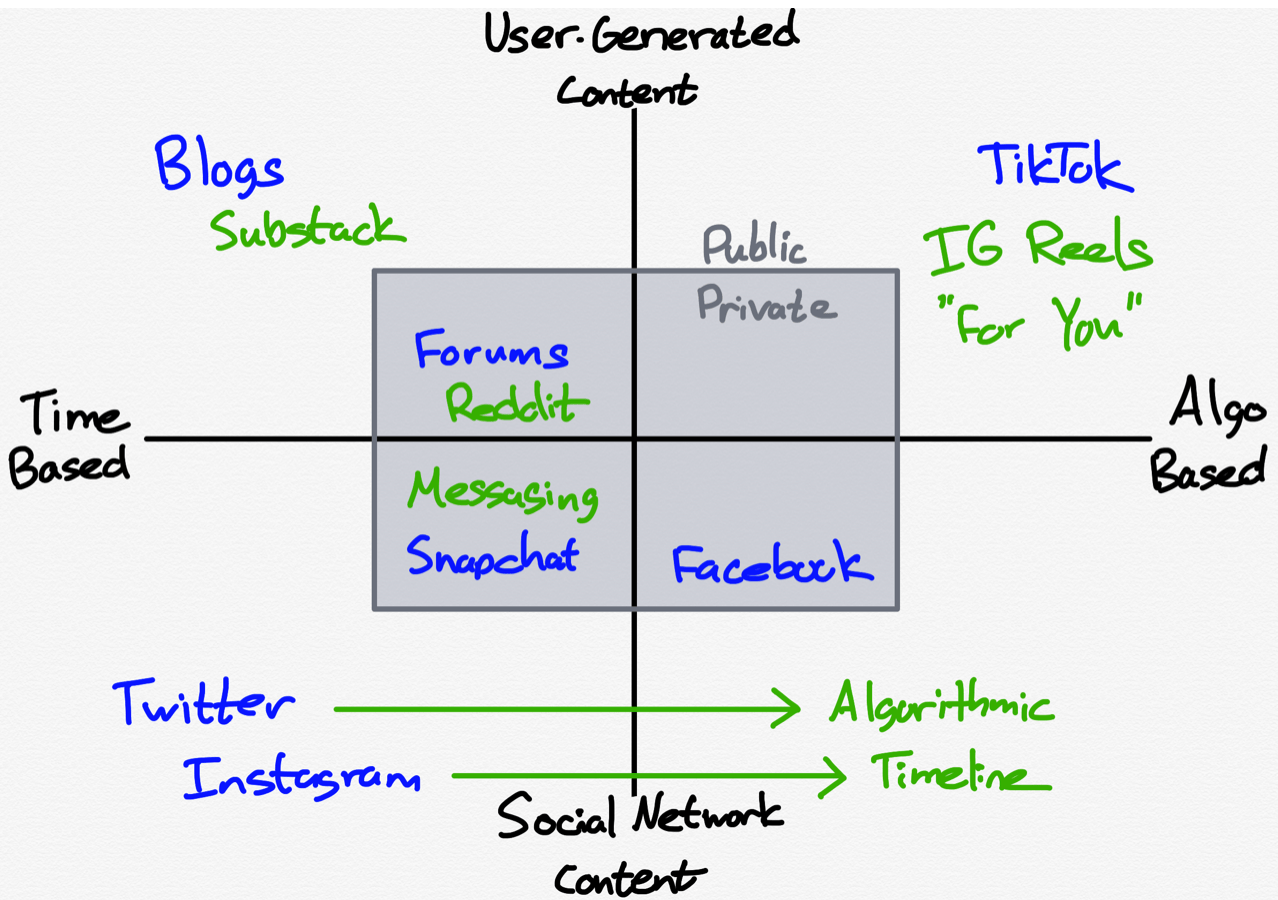
Living (Near) Your Life
As work becomes less dependent on location, life becomes more dependent on location.
I am sending today's article to both premium and regular subscribers. It will be part of the book, but it needs to be expanded and find its place. So, I want to hear everyone's thoughts and related ideas.
In other news...
🖥️ Next week's online subscriber meetup is coming! You can submit your questions in advance here. You can also see and upvote questions from other participants. The meetup is only for premium subscribers, but I might share some tidbits with everyone after it's done — so do submit your questions. All premium subscribers received a calendar invite; if you recently upgraded and didn't receive it — please let me know, and I'll add you.
🎤 Planning an event this fall? I have trips planned across the US, Asia, and the Middle East in September-November. In October, my agent is trying to combine a trip with a couple of other engagements in Europe. Get in touch with Raleigh (raleigh@chartwellspeakers.com) if you're planning anything. It would be nice to see you in person!
🤖 What can AI do for you? The August cohort of Practical AI is filling up. Check it out if you're looking to master the latest tools for marketing, financial analysis, and general business automation — or just like to learn about cool new stuff. Learn more here.

"I'm up for a cage match," Elon Musk tweeted in June 2023. He was responding to a report that Mark Zuckerberg was planning to launch a rival to Musk's Twitter (now known as "X"). Zuckerberg accepted the challenge in an Instagram post. By the time this book goes to print, it is unclear whether Musk and Zuck will spar. But within weeks of Musk's tweet, Zuckerberg's Meta launched a Twitter clone named Threads.
The launch of a new competitor may seem like the beginning of a new era for social media. But in reality, it represented the end of it. Platforms like Facebook, Twitter, Instagram, and TikTok are as popular as ever. But they are no longer social. Consider the evolution of Facebook. Initially, it did not have a feed at all, only profiles where users posted updates and photos. Then, it added a feed. But the feed only showed posts from people you chose to follow in chronological order. Gradually, algorithms became more important in determining what you see on your feed. They began to include posts from people and "accounts" you did not explicitly follow, organized not by time, but by what the algorithms thought would be most appealing.
Instagram and Twitter began further along this trajectory, emphasizing less symmetrical interaction, where many people consume content from a relatively small number of celebrities and interesting accounts. Instead of friending people on FB, we started following people on IG and Twitter. TikTok represented the culmination of this process. It doesn't even require you to follow anyone; it just shows you whatever it thinks will appeal to you and gradually homes in on your tastes and preferences. Regardless of their initial focus, all four apps now offer an algorithmic feed as a default.
Technology analyst Ben Thompson captured this shift in his Social/Communications map. Over time, the upper right quadrant of the map became more crowded as social media products embraced algorithmic feeds and content from anyone rather than from people you explicitly know or follow.

These developments have momentous consequences. More of our interactions are happening online, and a growing share of our online interactions are mediated by algorithms. This means we gradually lose control over our attention and who we interact with. And to make things worse, the algorithms constantly change, making it harder for us to "master" them and curate our feeds. This is tough on consumers and equally tough on content producers who struggle to build an audience or lose touch with the audience they already have.
Ben Thompson likens social media algorithms to physical landscapes or urban designs:
"In the modern world, machine learning algorithms that mediate who interacts with whom and how in social media feeds are, in essence, social institutions. When you change those algorithms you might as well be reconfiguring a city around a user while they sleep."
A world that can be reconfigured while we sleep is a world I do not wish to live in; I suspect that so do many other people. But more people join online platforms, and more content is created (by humans and AI); algorithms play a growing role in sifting through the noise in search of signals. What can be done instead?
Ten years ago, I had an idea for a simpler and, dare I say, more dignified algorithm. I designed and launched a social media app named Space (later renamed Otherz.com). The app showed a feed of posts from people within walking distance. Everyone used their real name. But all conversations disappeared once they were over, and people did not keep in touch unless they explicitly chose to exchange their details. A blog post from 2015 explains the app's rationale:
Does the world need another social platform? We think it does. We have Facebook to maintain ongoing, low-intensity interactions with people we know but hardly-ever wish to spend time with; we have Twitter to follow celebrities or topics we care about, regardless of where we are; we have LinkedIn to put a face to a name, Yik Yak for faceless games, WhatsApp for texting, SnapChat for sexting, and Tinder to try to get laid.
Different as they are, these services have one thing in common — they distract us from the simple present. On them, we are either someone else, somewhere else, or focused on something that already happened or is yet to occur. Somehow, the most obvious aspects of human communication have been neglected by the technology world: What about being your own self, right here, right now?
That’s why we built Space, a natural way to communicate with humans. Space allows you to see what people nearby are talking about, share signals with friends or strangers in your area, and walk away once the conversation is over — all messages disappear and you don’t keep in touch with anyone unless you specifically choose to. Just like in real life...
Over the past 20 years, algorithms have been busy figuring out creative ways to distract us from where we are. Space’s feed is focused on where you are. We use technology to empower your presence, not to undermine it. We take your friendships and preferences into account, but only when something relevant happens to be immediately near you. Simply put, our goal is to distract you back to reality.
It was a beautiful product, selected by Apple as a "best new app" and featured on the App Store's home page for weeks. And it was a beautiful vision for the future. But it didn't catch on. About 40,000 people downloaded it, but they were too spread out, and we never achieved the critical mass required for the magic to happen. In addition, it may have been ahead of its time. Most people were happy with algorithmic feeds and vast data collection, and, indeed, such feeds only became more popular during the following decade.
And yet, Space's basic algorithm is more relevant than ever. That algorithm is as old as human civilization. It is based on the simple assumption that where you are says a lot about who you are, who you'd like to see, and what you're interested in. When you have no other data about your users, this simple algorithm does a pretty good job. In some cases, it does a fantastic job because your "where" sends a very clear signal: For example, if you're in a baseball stadium, you're very likely to be interested in baseball. And if you're in a high-end suburban neighborhood, you're likely an affluent, middle-aged person with children.
But in many cases, your "where" doesn't say enough. One reason is that people spend a lot of time in places they'd rather avoid. Take me, for example. During 2015-2020, I spent a lot of time in midtown Manhattan. I had an office there, but I did not live nearby, and I was not interested in the vast majority of the people, products, and experiences available in that part of Manhattan. As a result, my "where" did not say much about me. Back then, if you had constructed a social media feed based on my location, it would likely fail to hold my attention for too long.
That was then. Today, I suspect that "where" will become a more powerful signal than it has been for a long time. More people can work from anywhere, or at least live farther than the office, thanks to flexible and hybrid work policies. As a result, people can be more deliberate about where they spend their time, which means where they are is a stronger indication of who they are, who they'd like to see, and what they're interested in. As "where" becomes less critical for work, it becomes more important for life. And as it becomes easier to work online, it becomes harder to socialize online. I have yet to uncover the exact mechanism that drives this dynamic, but I will.
Best,




